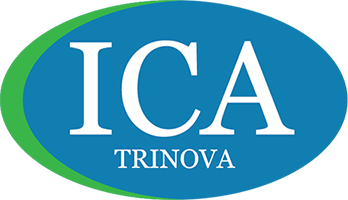1 Beavers St.
Newnan, GA 30263
Cl02 Sanitizer Efficacy for Fresh Produce
Gaseous chlorine dioxide (ClO2) was evaluated for effectiveness in killing Salmonella, Escherichia coli O157:H7, and Listeria monocytogenes on fresh-cut lettuce, cabbage, and carrot and Salmonella, yeasts, and molds on apples, peaches, tomatoes, and onions. Inoculum (100 ml, ca. 6.8 log CFU) containing five serotypes of Salmonella enterica, five strains of E. coli O157:H7, or five strains of L. monocytogenes was deposited on the skin and cut surfaces of fresh-cut vegetables, dried for 30 min at 228C, held for 20 h at 48C, and then incubated for 30 min at 228C before treatment.
Cl02 Sanitizer Efficacy
The efficacy of gaseous chlorine dioxide to reduce parasite and bacterial burden in produce was studied. Basil and lettuce leaves were inoculated with Cryptosporidium parvum and Cyclospora cayetanensis oocysts, Encephalitozoon intestinalis spores, and a cocktail of two isolates of nalidixic acid–resistant Escherichia coli O157:H7. The inoculated samples were then treated for 20 min with gaseous chlorine dioxide at 4.1 mg/liter. Cryptosporidium had a 2.6 and 3.31 most-probable-number log reduction in basil and lettuce, respectively. Reduction of Encephalitozoon in basil and lettuce was 3.58 and 4.58 CFU/g respectively. E. coli loads were significantly reduced (2.45 to 3.97 log), whereas Cyclospora sporulation was not affected by this treatment.
Cl02 Toxicity Data on Plants
Regular and excessive rates of chlorine dioxide (ClO2) and hydrogen dioxide (H2O2) were sprayed five times at 3-day intervals on eight bedding plant and nine shrub species to determine if plant damage would result. Marketability was judged to be reduced if >4% surface area of leaves and/or flowers were adversely affected. Rates of 5 and 50 ppm ClO2 and 900 and 2700 ppm H2O2 did not damage most plants tested and will likely control most common pathogen propagules. Rates of 100 ppm ClO2 and 5400 ppm H2O2 did not damage most plants tested if sprayed less than four consecutive times and should control some of the more chemical-tolerant pathogens.
Cl02 vs Thielaviopsis basicola Fusarium oxysporum
Regular and excessive rates of chlorine dioxide (ClO2) and hydrogen dioxide (H2O2) were sprayed five times at 3-day intervals on eight bedding plant and nine shrub species to determine if plant damage would result. Marketability was judged to be reduced if >4% surface area of leaves and/or flowers were adversely affected. Rates of 5 and 50 ppm ClO2 and 900 and 2700 ppm H2O2 did not damage most plants tested and will likely control most common pathogen propagules. Rates of 100 ppm ClO2 and 5400 ppm H2O2 did not damage most plants tested if sprayed less than four consecutive times and should control some of the more chemical-tolerant pathogens.
Efficacy of Cl02 and Ozone on Produce
The objective of this study was to examine the effectiveness of gaseous chlorine dioxide (ClO2) or ozone (O3) treatment against Shiga toxin-producing Escherichia coli (STEC), serovars of Salmonella enterica, and Listeria monocytogenes on baby-cut carrots, lowbush blueberries, and beefsteak tomatoes using a scaledup closed-circulation treatment system. Dry ClO2 precursors were combined in-chamber to make 0.03, 0.06, and 0.12 mg ClO2/g produce for a 2.5 h exposure and 0.04, 0.07, and 0.15 mg ClO2/g produce for a 5.0 h exposure time. Ozone was generated through corona-discharge of a dry oxygen feed and either 0.86 or 1.71 mg O3/g produce concentrations were used to treat 2 kg of produce for 2.5 and 5.0 h.
How Onions Benefit from Cl02 Treatment
In the first week of May 2016, a lot of 14MT of Onions was identified at the farmer’s field. The lot was divided into two sections of 7 MT each – one lot was treated with ClO2 granules from ICA-TriNova LLC and the other lot was kept without ClO2. Granules were integrated into the pile during house loading.
Both the lots were then stored in traditional Indian Onion Storage Structure.

